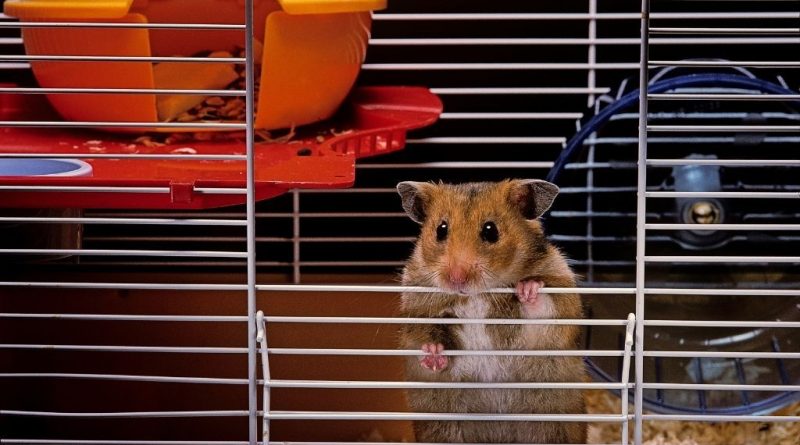Pet hamsters sparked a coronavirus outbreak in Hong Kong
Imported pet hamsters carried the delta variant of the novel coronavirus into Hong Kong, sparking a local outbreak, a new study suggests.
The research, posted Jan. 28 to the database Preprints with The Lancet, has not yet been peer-reviewed, but it provides the first evidence of hamster-to-human transmission of SARS-CoV-2, the virus that causes COVID-19. Hamsters can be infected with the coronavirus in laboratory settings and are often used in research, but prior to the Hong Kong outbreak, there wasn’t evidence of the rodents passing the virus to humans, Nature reported.
So far, the outbreak has affected about 50 people and has prompted government officials to cull thousands of pet hamsters in the city, according to Nature.
The new study initially began after a pet shop worker in Hong Kong’s Causeway Bay district tested positive for COVID-19 in January, The Washington Post reported last month. The 23-year-old woman was infected with the delta variant, health officials determined, which was odd because the variant hadn’t been spotted in the city since October 2021, according to Nature.
The woman hadn’t been in contact with any other individuals known to be infected, but she had been working in the pet shop, called Little Boss, which sells various animals, including hamsters, rabbits, guinea pigs and chinchillas, the study authors noted in their report.
Cases of mink-to-human coronavirus transmission took place on mink farms early in the pandemic, Live Science previously reported. Suspecting that this might be another potential case of animal-to-human transmission, Hong Kong health officials began screening animals at the pet shop for evidence of coronavirus infection. They also screened animals at the wholesale market that supplies the pet shop’s animals.
The officials didn’t find evidence of infection among any of the rabbits, guinea pigs, chinchillas, mice or dwarf hamsters that they screened. However, the team found that eight out of 16 Syrian hamsters tested at the pet shop showed evidence of SARS-CoV-2 infection through a positive PCR test and/or the presence of antibodies in their blood. The same was true of seven out of 12 Syrian hamsters tested at the warehouse. None of the rodents showed overt signs of illness, they reported.
—11 (sometimes) deadly diseases that hopped across species
—14 coronavirus myths busted by science
—The deadliest viruses in history
As this investigation was unfolding, a woman who had recently visited the pet shop tested positive for COVID-19, and soon, her spouse and children did as well. The investigators took samples of coronavirus from the woman, her spouse and the pet shop worker and analyzed the genome of the virus from each; they also analyzed the genomic sequences of viral samples collected from 12 of the 15 infected hamsters. All these samples turned out to be a version of the delta variant never-before-seen in Hong Kong, although the sequences were not completely identical to each other, according to Nature.
Based on these subtle genetic differences, the team determined that some of the hamsters likely caught the coronavirus in November 2021, before being imported to Hong Kong from the Netherlands. They concluded this, in part, because the viral sequences most closely resembled those of samples collected from people in European countries and uploaded to a public database, the authors wrote in their report.
Upon reaching Hong Kong, the virus then spread to more hamsters, picking up a few mutations along the way, before infecting the pet shop owner and the shop customer on separate occasions, the researchers suspect. The customer then passed the virus on to her spouse, in a case of human-to-human transmission, the team concluded.
Compared with the delta variant samples from Europe, the viral sequences found in Hong Kong residents and hamsters carried four unique mutations, the authors reported. Two of these mutations are in genes that code for the spike protein, which the virus uses to infect cells, and may potentially help the virus escape some antibodies and enter cells more efficiently. The team also found a third spike protein mutation whose effects “require further investigation,” they wrote.
Despite the study author’s conclusions, though, there’s still a possibility that the hamsters first caught SARS-CoV-2 after arriving in Hong Kong, Arinjay Banerjee, a virologist at the University of Saskatchewan in Saskatoon, Canada, told Nature. “There are so many people handling hamsters during the process of them being transported,” he said. On their way to Hong Kong, one batch of hamsters stopped in Doha, Qatar and were moved to a different plane; the second batch stopped in Bangkok, Thailand but remained on the same plane, the study authors noted.
That said, Marion Koopmans, a virologist at the Erasmus University Medical Center, told Nature that, like the authors, she’s convinced that the hamsters were infected prior to importation.
In either case, the study suggests that hamsters can and do pass the coronavirus to people, but “to be fair to the hamsters,” people are still much more likely to catch the virus from each other, senior author Leo Poon, a virologist at the University of Hong Kong, told Nature.
Read more about the hamster-driven outbreak in Nature and The Washington Post.
Originally published on Live Science.
Nicoletta Lanese
Staff Writer
Nicoletta Lanese is a staff writer for Live Science covering health and medicine, along with an assortment of biology, animal, environment and climate stories. She holds degrees in neuroscience and dance from the University of Florida and a graduate certificate in science communication from the University of California, Santa Cruz. Her work has appeared in The Scientist Magazine, Science News, The San Jose Mercury News and Mongabay, among other outlets.
Source: Read Full Article




